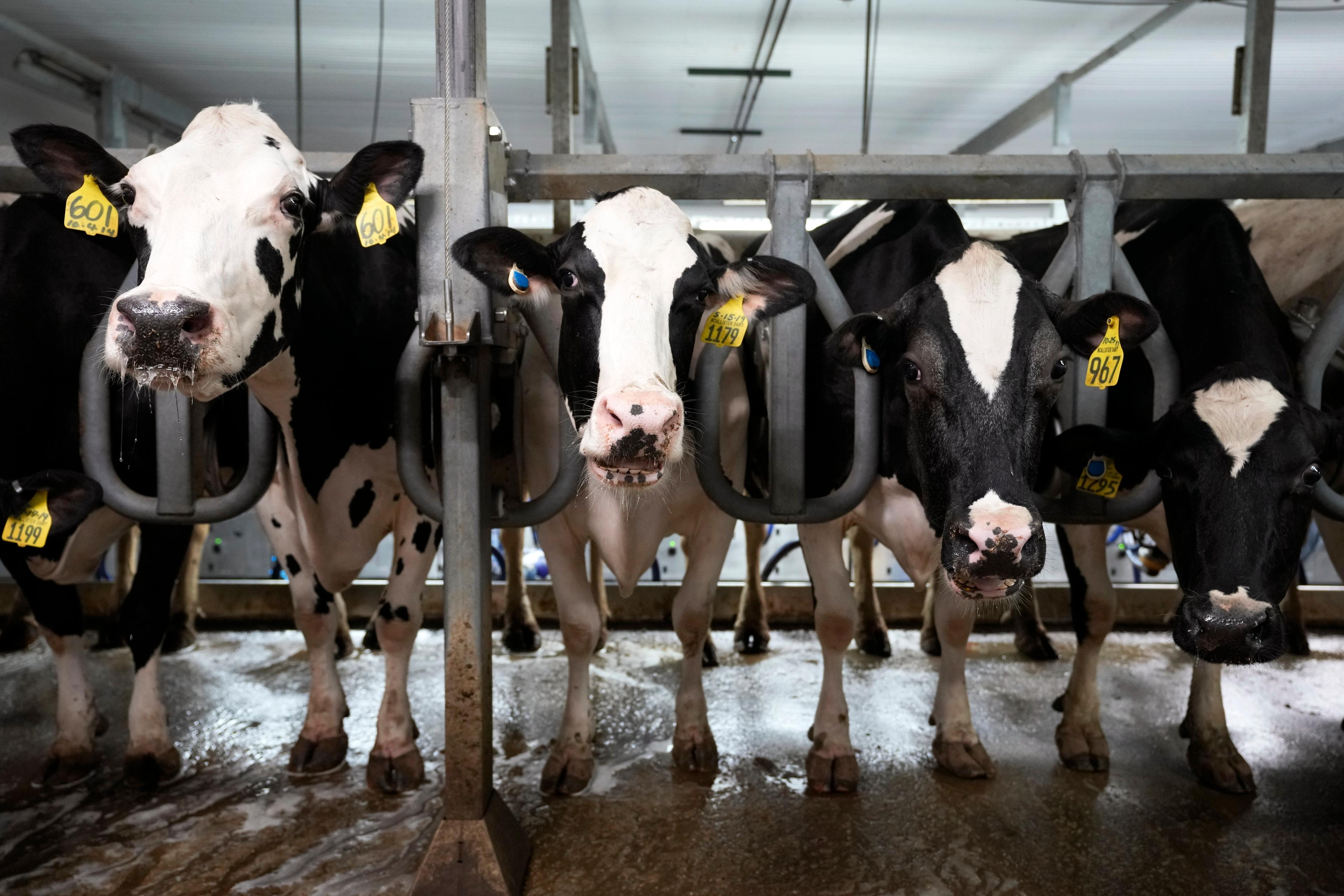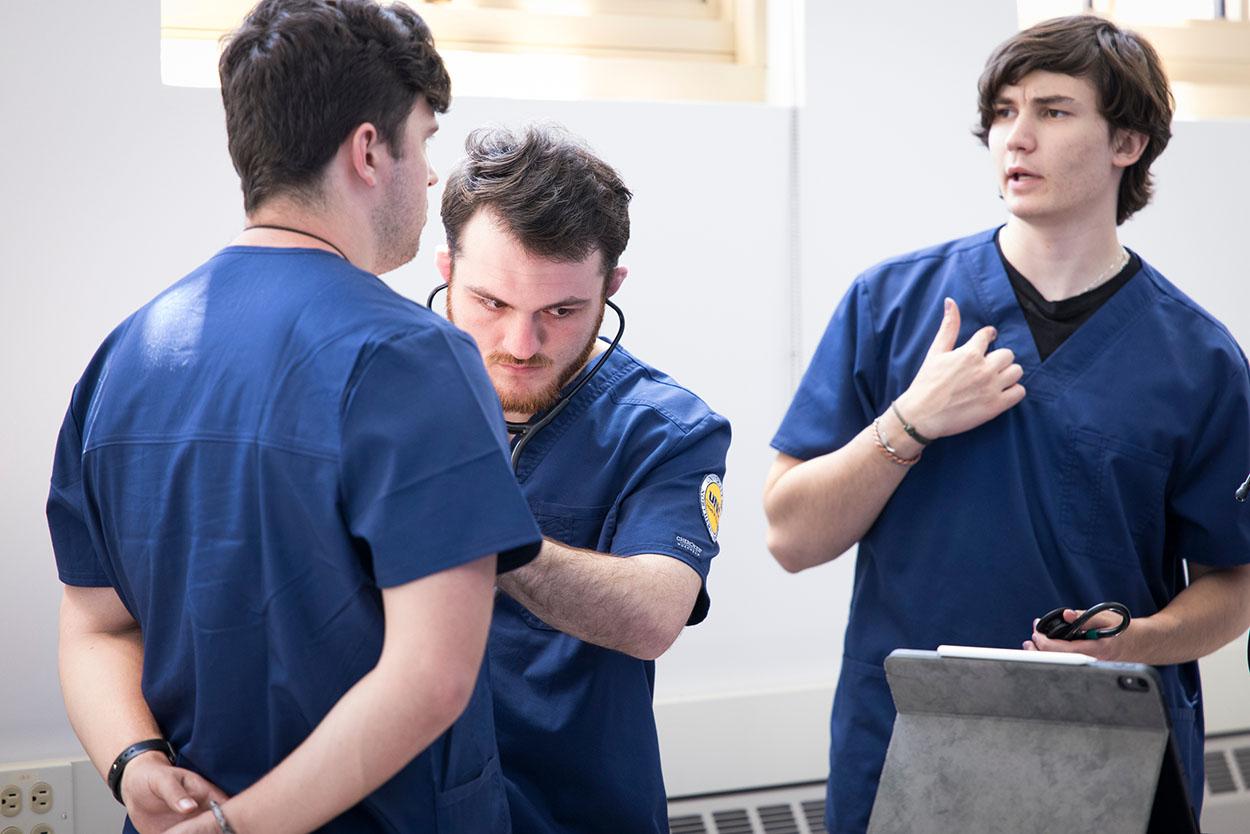
Cases of highly pathogenic avian flu cases in Colorado dairy cows keep rising, with numbers from a federal website recording the state as having more cases than any other.
A top state health official said Tuesday the state is working with dairy farms and the industry as they continue to work to limit the spread. The state reported its first case in dairy cows in April. Since then, Colorado has recorded another 26 cases. The state reported 22 in June, adding 17 cases in the last two weeks, including a new case July 1 to a state website tracking positive cases in dairy cows. The site shows nearly two dozen cases under quarantine.
For the first four cases that the state identified in April and May, the status is listed as “quarantine released.”
All confirmed cases have been in northeast Colorado. About a quarter of the state’s dairies have confirmed cases. (Colorado has 105 licensed dairy facilities, 27 of which have been affected by the avian flu outbreak as of Tuesday, according to the state health department.)
Colorado is now reporting more cases than any other state, according to the U.S. Department of Agriculture website, with 21 livestock herds affected during the last 30 days. Iowa recorded a dozen herds affected, while Idaho had 10.
Wyoming, Texas, Minnesota and Michigan all had confirmed cases in the single digits on the site, which contains data from the Animal and Plant Health Inspection Service. The site was last updated June 27.
Risk to people is low
“The risk continues to be low to people, but we know that dairy workers in particular right now are going to have increased exposure to the virus through the nature of their work,” said Dr. Rachel Herlihy, the state epidemiologist.
She said it’s key for dairy workers and farms to know how to protect their workers and decrease the risk of infection. “Much of the way to successfully do that is through the use of personal protective equipment or PPE,” she said.
The state is working with the farms to monitor more than 500 workers. Another 113 workers have completed their monitoring period.
“The total number of individuals that we have tested is nine, I believe. And results have all been negative so far with some test results pending,” Herlihy said.
She said CDC guidance is to monitor people, if they do have symptoms, (which include fever, fatigue, cough, muscle aches, sore throat and conjunctivitis, pink eye) then to proceed with testing them with a PCR, or molecular test. She said the state also ensures that they have access to antiviral medication, specifically Tamiflu. “So getting treatment to those folks while we are awaiting test results,” is key, she said.
Active search for cases
But Colorado’s status may be driven, at least in part, by the fact that it’s actively looking for cases. And some other states may not be.
“I wouldn't put too much credence into Colorado now taking over being number one now,” said Dr. John Swartzberg, a clinical professor emeritus and expert in infectious diseases, at UC Berkeley. “It's just that you're probably looking more carefully.”
For the last several weeks a map on the USDA’s website has listed cases from just a handful of states, with none being reported in the majority of cases, including some large dairy states like California. The agency hadn’t responded to an email from CPR looking for more detail as of the deadline for this story.
One worker in Texas and two in Michigan tested positive for the virus earlier this year, but none has been recorded in Colorado. The CDC said last month, after the second case in Michigan, the risk to the public remained low “because all three sporadic cases had direct contact with infected cows.”
Public health experts watch for spillover
Public health experts said they’re watching to see if infections spillover from cattle to humans and then human to human.
“I think it's an important time for public health to be watching this really closely,” said Elizabeth Carlton, an epidemiologist at the Colorado School of Public Health. “Concern for the general public is pretty low right now,” she said.
“That level of concern would ratchet up if we started seeing evidence of human to human transmission and where we might expect to see that first is dairy workers spreading infections to their families,” Carlton said. “And so far there is no evidence of that.”
Carlton said the COVID-19 pandemic has demonstrated the importance of preparedness.
“It is a time when public health should be prepared,” she said. “It's a time when public health and agriculture need to be communicating with each other and certainly a time where our surveillance infrastructure needs to be robust so we can detect if there are upticks in influenza in the weeks or months ahead.”
Herlihy said the state is talking to dairy farm operators and the industry to identify and track infections in herds as well as providing information, including to workers, some whose English language skills may be limited.
“A really important part of our approach at the state level and with our local partners is ensuring that our materials are available in multiple languages and that our materials are culturally appropriate,” she said.
U.S. government preps for potential vaccine
Meanwhile, the U.S. government will pay the vaccine maker Moderna $176 million to accelerate development of a pandemic influenza vaccine. It could be used to help protect people from bird flu, federal officials announced Tuesday.
Moderna already has such a vaccine in early-stage testing. It uses the same mRNA technology that was used to develop and distribute a vaccine to protect against COVID-19. The new funds from the U.S. Department of Health and Human Services funds would back ongoing development of the vaccine. That would include a late-stage trial in 2025 if initial study results are promising.
Information for consumers and veterinarians
With the increasing number of cases raising health concerns, Colorado’s website provides information for both consumers and veterinarians.
It notes that both USDA and the Food and Drug Administration (FDA) have said that because commercial milk products are pasteurized before coming on the market, for now, “there is no concern about the safety” of the commercial milk supply.
Milk that is pasteurized, a process in which milk is heated to a high enough temperature for a certain length of time to remove disease-causing germs, doesn’t pose a risk to the health of consumers, according to the site. Pasteurization has been proven to inactivate bacteria and viruses in milk.
The CDC however does recommend against consuming raw milk contaminated with live A(H5N1) virus as a way to develop antibodies against A(H5N1) virus to protect against future disease.
“Consuming raw milk could make you sick,” the agency says on its website. “It's important to understand that raw milk can be a source of foodborne illness.”
More information is available on the CDC’s website regarding the H5N1 Bird Flu Current Situation.
Colorado veterinarians must report cattle illness that presents clinical signs of highly pathogenic avian influenza to the State Veterinarian’s office at 303-869-9130. They can also make a report via the Reportable Disease Case Report Form, or to their local Veterinary Medical Officer. Veterinarians can request HPAI testing for samples that meet the criteria.
The Associated Press contributed to this report.









